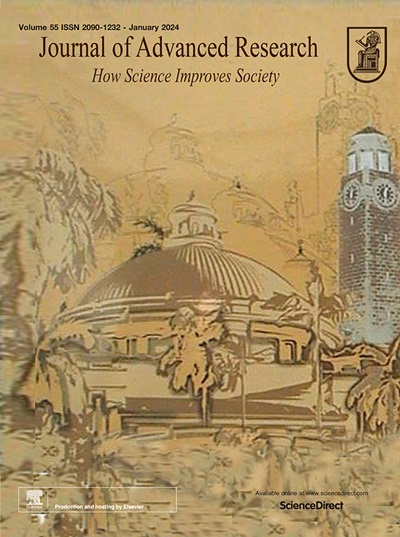生酮饮食和β-羟基丁酸抑制HDAC1维持胸主动脉瘤血管平滑肌细胞功能
IF 11.4
1区 综合性期刊
Q1 MULTIDISCIPLINARY SCIENCES
引用次数: 0
摘要
背景:胸主动脉瘤(TAA)是一种以胸主动脉扩张为特征的严重疾病,常导致主动脉夹层或破裂。目前的治疗包括手术和药物干预,并不能有效地解决潜在的分子机制。本研究探讨生酮饮食(KD)对TAA的影响,重点关注组蛋白去乙酰化酶1 (HDAC1)和血管平滑肌细胞(VSMCs)功能。方法采用β-单马来酸氨基丙腈(BAPN)诱导TAA小鼠模型。小鼠被分成两组,一组接受标准饮食,另一组接受KD。此外,给予β-羟基丁酸酯(BHB),一种kd衍生的酮体,和parthenolide或ITSA-1。该研究测量了存活率、主动脉扩张、弹性蛋白降解、VSMC收缩标志物、线粒体功能和氧化应激水平。结果skd可显著提高TAA小鼠模型的存活率,降低主动脉扩张和弹性蛋白降解。BHB也减缓了TAA的发展,显示出类似的保护作用。KD和BHB通过恢复收缩标记物的表达,在保护线粒体功能和维持VSMC收缩表型方面特别有效。此外,KD和BHB显著降低了氧化应激水平。加入HDAC抑制剂parthenolide或HDAC激动剂ITSA-1进一步评估BHB对血管损伤的保护作用。结论KD和BHB在TAA中调控HDAC1、维持线粒体功能、维持VSMC表型、降低氧化应激等方面具有重要作用。我们的研究结果表明,KD和BHB通过靶向参与TAA进展的特定分子途径,是治疗TAA的有希望的治疗策略。本研究强调了生活方式干预的重要性和创新,如KD,通过解决其潜在的分子机制来减轻TAA。本文章由计算机程序翻译,如有差异,请以英文原文为准。

Ketogenic diet and β-hydroxybutyrate inhibit HDAC1 to preserve vascular smooth muscle cell function in thoracic aortic aneurysm
Background
Thoracic aortic aneurysm (TAA) is a serious condition characterized by dilation of the thoracic aorta, often leading to aortic dissection or rupture. Current treatments involve surgical and pharmacological interventions and do not effectively address the underlying molecular mechanisms. This study explores the effects of ketogenic diet (KD) on TAA, focusing on histone deacetylase 1 (HDAC1) and vascular smooth muscle cells (VSMCs) function.Methods
A β-aminopropionitrile monofumarate (BAPN)-induced TAA mouse model was used. Mice were divided into groups receiving either a standard diet or KD. Additionally, β-hydroxybutyrate (BHB), a KD-derived ketone body, and parthenolide or ITSA-1 were administered. The study measured survival rates, aortic dilation, elastin degradation, VSMC contractile markers, mitochondrial function, and oxidative stress levels.Results
KD significantly improved survival rates and reduced aortic dilation and elastin degradation in the TAA mouse model. BHB also mitigated TAA development, demonstrating similar protective effects. KD and BHB were particularly effective in preserving mitochondrial function and maintaining VSMC contractile phenotype by restoring contractile marker expression. Additionally, KD and BHB significantly reduced oxidative stress levels. The addition of HDAC1 inhibitor parthenolide or HDAC agonist ITSA-1 further evaluated the protective effects of BHB against vascular damage.Conclusion
Our study reveals the important roles of KD and BHB in regulating HDAC1, preserving mitochondrial function, maintaining VSMC phenotype, and reducing oxidative stress in TAA. Our findings demonstrate KD and BHB as promising therapeutic strategies for treating TAA by targeting specific molecular pathways involved in its progression. This study highlights the significance and innovation of lifestyle interventions, such as KD, in mitigating TAA by addressing its underlying molecular mechanisms.求助全文
通过发布文献求助,成功后即可免费获取论文全文。
去求助
来源期刊

Journal of Advanced Research
Multidisciplinary-Multidisciplinary
CiteScore
21.60
自引率
0.90%
发文量
280
审稿时长
12 weeks
期刊介绍:
Journal of Advanced Research (J. Adv. Res.) is an applied/natural sciences, peer-reviewed journal that focuses on interdisciplinary research. The journal aims to contribute to applied research and knowledge worldwide through the publication of original and high-quality research articles in the fields of Medicine, Pharmaceutical Sciences, Dentistry, Physical Therapy, Veterinary Medicine, and Basic and Biological Sciences.
The following abstracting and indexing services cover the Journal of Advanced Research: PubMed/Medline, Essential Science Indicators, Web of Science, Scopus, PubMed Central, PubMed, Science Citation Index Expanded, Directory of Open Access Journals (DOAJ), and INSPEC.
 求助内容:
求助内容: 应助结果提醒方式:
应助结果提醒方式:


